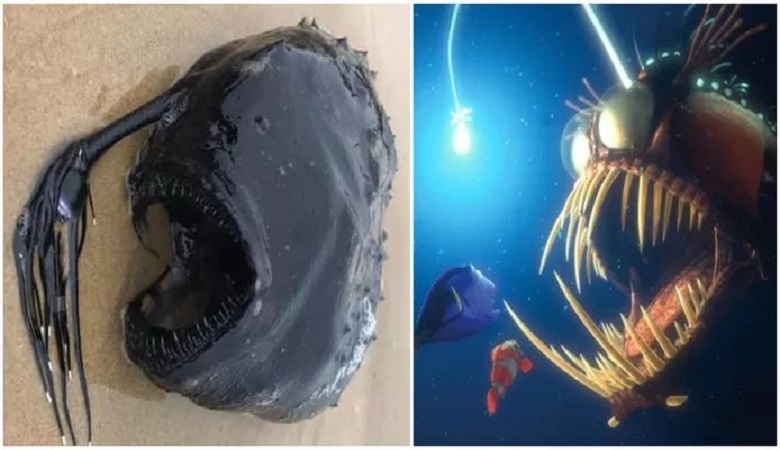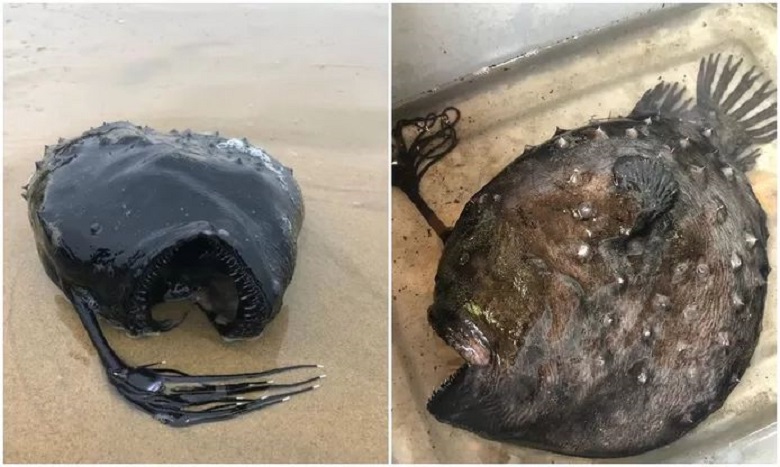Monstrous deep-sea fish with light from ‘Finding Nemo’ washes up on the beach

A deep-sea angelfish, also known as a black devil, washed up on a California beach last week. This is remarkable because the species lives – as the name suggests – deep in the sea and is rarely spotted. Where can you know her – because she is definitely a female – from? Your TV. In the animated film ‘Finding Nemo’, the terrifying monster with the light and giant teeth scares fish Dory and Marlin in the dark.
The about 18-inch deep-sea angelfish washed up in remarkably good condition on Crystal Cove State Beach in Newport Beach last Friday. The beast seems to come straight out of a horror movie, with its mouth wide open and in it an elaborate set of sharp, long teeth. The large protruding appendage dangling in wisps of tentacles in front of that creepy mouth also attracts attention.

Rare find
It may be an eerie sight, but it is a rare and unique find. This fish normally lives deep in the Pacific Ocean and has barely been seen. It was beachgoer Ben Estes who found the deep-sea angelfish on the beach. “I immediately knew it was an unusual discovery,” Ben told the British newspaper ‘The Guardian’. The American lives by the sea and has been fishing all his life. “But I have never seen a fish that looks like this.”
Almost perfectly intact
“I don’t know if he realized what he just found,” Jessica Roame, Davey’s Locker Sportfishing Training Coordinator, told The Los Angeles Times. She points out that these fish normally live hundreds of feet below the surface. This is probably a Pacific football fish or Himantolophus sagamius. “It is really striking that this animal has ended up on the beach, they are rarely found outside the depths. And the fish was also almost perfectly intact.”
Scientists are thrilled that the find will allow them to take a new look at the deep-sea angelfish, which is said to be more than 200 species worldwide. In the meantime, the fish has been frozen for storage. The animal may soon be given a special place in the Los Angeles Museum of Nature.
Lure rod
Although they are hardly ever seen, deep-sea angelfish are well known, or rather infamous. Their special appearance is in between, combined with their intriguing hunting technique. With their bait rod, the flashy phosphorescent ‘light’ in front of their head that lights up in the deep water with the help of light-emitting bacteria, they lure fish, squid, and crustaceans, which they then ‘sweep up’ and devour with their spiky teeth.
Sexual parasites
Or so the females do it anyway because that light is not the only fascinating thing about these fish. The males have evolved over time into a type of ‘sexual parasite’ and are much smaller than the females. After attaching themselves to the ladies and the two fusings, the men lose all of their internal organs – including their eyes – and in the long run, nothing is left but their testicles. Forged together forever, the male has been relegated to a permanent semen supplier in exchange for nourishment.
The find on the beach in California is clearly a female.




